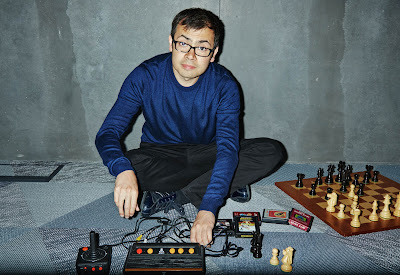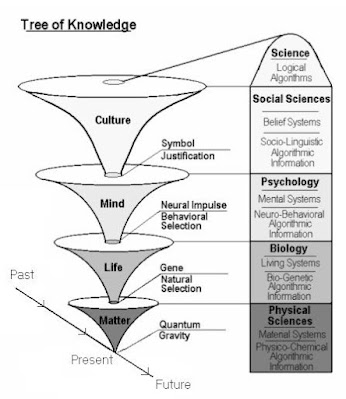Hiroshi Ishiguro is a well-known engineer who is most known for his life-like humanoid robots.
He thinks that the present information culture will
eventually develop into a world populated by robot caregivers or helpmates.
Ishiguro also expects that studying artificial people would
help us better understand how humans are conditioned to read and comprehend the
actions and expressions of their own species.
Ishiguro seeks to explain concepts like relationship authenticity,
autonomy, creativity, imitation, reciprocity, and robot ethics in terms of
cognitive science.
Ishiguro's study aims to produce robots that are uncannily
identical to humans in look and behavior.
He thinks that his robots will assist us in comprehending
what it is to be human.
Sonzaikan is the Japanese name for this sense of a human's
substantial presence, or spirit.
Success, according to Ishiguro, may be measured and
evaluated in two ways.
The first is what he refers to as the complete Turing Test,
in which an android passes if 70% of human spectators are unaware that they are
seeing a robot until at least two seconds have passed.
The second metric for success, he claims, is the length of
time a human stays actively engaged with a robot before discovering that the
robot's cooperative eye tracking does not reflect true thinking.
Robovie was one of Ishiguro's earliest robots, launched in
2000.
Ishiguro intended to make a robot that didn't appear like a
machine or a pet, but might be mistaken for a friend in everyday life.
Robovie may not seem to be human, but it can perform a
variety of innovative human-like motions and interactive activities.
Eye contact, staring at items, pointing at things, nodding,
swinging and folding arms, shaking hands, and saying hello and goodbye are all
possible with Robovie.
Robo Doll was extensively featured in Japanese media, and
Ishiguro was persuaded that the robot's look, engagement, and conversation were
vital to deeper, more nuanced connections between robots and humans.
In 2003, Ishiguro debuted Actroid to the general public for
the first time.
Sanrio's Kokoro animatronics division has begun
manufacturing Actroid, an autonomous robot controlled by AI software developed
at Osaka University's Intelligent Robotics Laboratory.
Actroid has a feminine look (in science fiction terms, a
"gynoid") with skin constructed of incredibly realistic silicone.
Internal sensors and quiet air actuators at 47 points of
physical articulation allow the robot to replicate human movement, breathing,
and blinking, and it can even speak.
Movement is done by sensor processing, data files carrying
key val ues for degrees of freedom in movement of limbs and joints.
Five to seven degrees of freedom are typical for robot arms.
Arms, legs, torso, and neck of humanoid robots may have
thirty or more degrees of freedom.
Programmers create Actroid scenarios in four steps: (1)
collect recognition data from sensors activated by contact, (2) choose a motion
module, (3) execute a specified series of movements and play an audio file, and
(4) return to step 1.
Experiments utilizing irregular random or contingent
reactions to human context hints have been shown to be helpful in holding the
human subject's attention, but they are made much more effective when planned
scenarios are included.
Motion modules are written in XML, a text-based markup
language that is simple enough for even inexperienced programmers to
understand.
Ishiguro debuted Repliee variants of the Actroid in 2005,
which were supposed to be indistinguishable from a human female on first
glance.
Repliee Q1Expo is an android replica of Ayako Fujii, a
genuine Japanese newscaster.
Repliee androids are interactive; they can use voice
recognition software to comprehend human conversations, answer verbally,
maintain eye contact, and react quickly to human touch.
This is made possible by a sensor network made up of
infrared motion detectors, cameras, microphones, identification tag readers,
and floor sensors that is distributed and ubiquitous.
Artificial intelligence is used by the robot to assess
whether the human is contacting the robot gently or aggressively.
Ishiguro also debuted Repliee R1, a kid version of the robot
that looks identical to his then four-year-old daughter.
Actroids have recently been proven to be capable of
imitating human limb and joint movement by observing and duplicating the
movements.
Because much of the computer gear that runs the artificial
intelligence program is external to the robot, it is not capable of actual
movement.
Self-reports of human volunteers' sentiments and moods are
captured when robots perform activities in research done at Ishiguro's lab.
The Actroid elicits a wide spectrum of emotions, from
curiosity to disgust, acceptance to terror.
Ishiguro's research colleagues have also benefited from
real-time neuroimaging of human volunteers in order to better understand how
human brains are stimulated in human-android interactions.
As a result, Actroid serves as a testbed for determining why
particular nonhuman agent acts fail to elicit the required cognitive reactions
in humans.
The Geminoid robots were created in response to the fact
that artificial intelligence lags far behind robotics when it comes to
developing realistic interactions between humans and androids.
Ishiguro, in particular, admitted that it would be several
years before a computer could have a lengthy, intensive spoken discussion with
a person.
The Geminoid HI-1, which debuted in 2006, is a teleoperated
(rather than totally autonomous) robot that looks similar to Ishiguro.
The name "gemininoid" is derived from the Latin
word "twin." Hand fidgeting, blinking, and motions similar with human
respiration are all possible for Geminoid.
Motion-capture technology is used to operate the android,
which mimics Ishiguro's face and body motions.
The robot can imitate its creator's voice and communicate in
a human-like manner.
Ishiguro plans to utilize the robot to teach students
through remote telepresence one day.
When he is teleoperating the robot, he has observed that the
sensation of immersion is so strong that his brain is fooled into producing
phantom perceptions of actual contact when the android is poked.
The Geminoid-DK is a mechanical doppelgänger of Danish
psychology professor Henrik Schärfe, launched in 2011.
While some viewers find the Geminoid's look unsettling, many
others do not and simply communicate with the robot in a normal way.
In 2010, the Telenoid R1 was introduced as a teleoperated
android robot.
Telenoid is 30 inches tall and amorphous, with just a
passing resemblance to a human form.
The robot's objective is to transmit a human voice and
gestures to a spectator who may use it as a communication or videoconferencing
tool.
The Telenoid, like the other robots in Ishiguro's lab, looks
to be alive: it simulates breathing and speech gestures and blinks.
However, in order to stimulate creativity, the design limits
the amount of features.
In this manner, the Telenoid is analogous to a tangible,
real-world avatar.
Its goal is to make more intimate, human-like interactions
possible using telecommunications technology.
Ishiguro suggests that the robot might one day serve as a
suitable stand-in for a teacher or partner who is otherwise only accessible
from afar.
The Elfoid, a tiny version of the robot, can be grasped with
one hand and carried in a pocket.
The autonomous persocom dolls that replace smart phones and
other electronics in the immensely famous manga series Chobits foreshadowed the
Actroid and Telenoid.
Ishiguro is a professor of systems innovation and the
director of Osaka University's Intelligent Robotics Laboratory.
He's also a group leader at Kansai Science City's Advanced
Telecommunications Research Institute (ATR) and a cofounder of the tech-transfer
startup Vstone Ltd.
He thinks that future commercial enterprises will profit
from the success of teleoperated robots in order to fund the continued
development of his autonomous robots.
Erica, a humanoid robot that became a Japanese television
news presenter in 2018, is his most recent creation.
Ishiguro studied oil painting extensively as a young man,
pondering how to depict human resemblance on canvas while he worked.
In Hanao Mori's computer science lab at Yamanashi
University, he got enthralled with robots.
At Osaka University, Ishiguro pursued his PhD in engineering
under computer vision and image recognition pioneer Saburo Tsuji.
At studies done in Tsuji’s lab, he worked on mobile robots
capable of SLAM— simultaneous mapping and navigation using panoramic and
omni-directional video cameras.
This work led to his doctoral dissertation, which focused on
tracking a human subject using active camera control and panning to acquire
complete 360-degree views of the surroundings.
Ishiguro believed that his technology and applications may
be utilized to provide a meaningful internal map of an interacting robot's
surroundings.
His dissertation was rejected by the first reviewer of an
article based on it.
Fine arts and technology, according to Ishiguro, are
inexorably linked; art inspires new technologies, while technology enables for
the creation and duplication of art.
Ishiguro has recently brought his robots to Seinendan, a
theatre company founded by Oriza Hirata, in order to put what he's learned about
human-robot communication into practice.
Ishiguro's field of cognitive science and AI, which he calls
android science, has precedents in Disneyland's "Great Moments with Mr.
Lincoln" robotics animation show and the fictitious
robot replacements described in the Bruce Willis film Surrogates (2009).
In the Willis film, Ishiguro has a cameo appearance.
You may also want to read more about Artificial Intelligence here.
See also:
Caregiver Robots; Nonhuman Rights and Personhood.
Further Reading:
Guizzo, Erico. 2010. “The Man Who Made a Copy of Himself.” IEEE Spectrum 47, no. 4 (April): 44–56.
Ishiguro, Hiroshi, and Fabio Dalla Libera, eds. 2018. Geminoid Studies: Science and Technologies for Humanlike Teleoperated Androids. New York: Springer.
Ishiguro, Hiroshi, and Shuichi Nishio. 2007. “Building Artificial Humans to Understand Humans.” Journal of Artificial Organs 10, no. 3: 133–42.
Ishiguro, Hiroshi, Tetsuo Ono, Michita Imai, Takeshi Maeda, Takayuki Kanda, and Ryohei Nakatsu. 2001. “Robovie: An Interactive Humanoid Robot.” International Journal of Industrial Robotics 28, no. 6: 498–503.
Kahn, Peter H., Jr., Hiroshi Ishiguro, Batya Friedman, Takayuki Kanda, Nathan G. Freier, Rachel L. Severson, and Jessica Miller. 2007. “What Is a Human? Toward Psychological Benchmarks in the Field of Human–Robot Interaction.” Interaction Studies 8, no. 3: 363–90.
MacDorman, Karl F., and Hiroshi Ishiguro. 2006. “The Uncanny Advantage of Using Androids in Cognitive and Social Science Research.” Interaction Studies 7, no. 3: 297–337.
Nishio, Shuichi, Hiroshi Ishiguro, and Norihiro Hagita. 2007a. “Can a Teleoperated Android Represent Personal Presence? A Case Study with Children.” Psychologia 50: 330–42.
Nishio, Shuichi, Hiroshi Ishiguro, and Norihiro Hagita. 2007b. “Geminoid: Teleoperated Android of an Existing Person.” In Humanoid Robots: New Developments, edited by Armando Carlos de Pina Filho, 343–52. Vienna, Austria: I-Tech.














